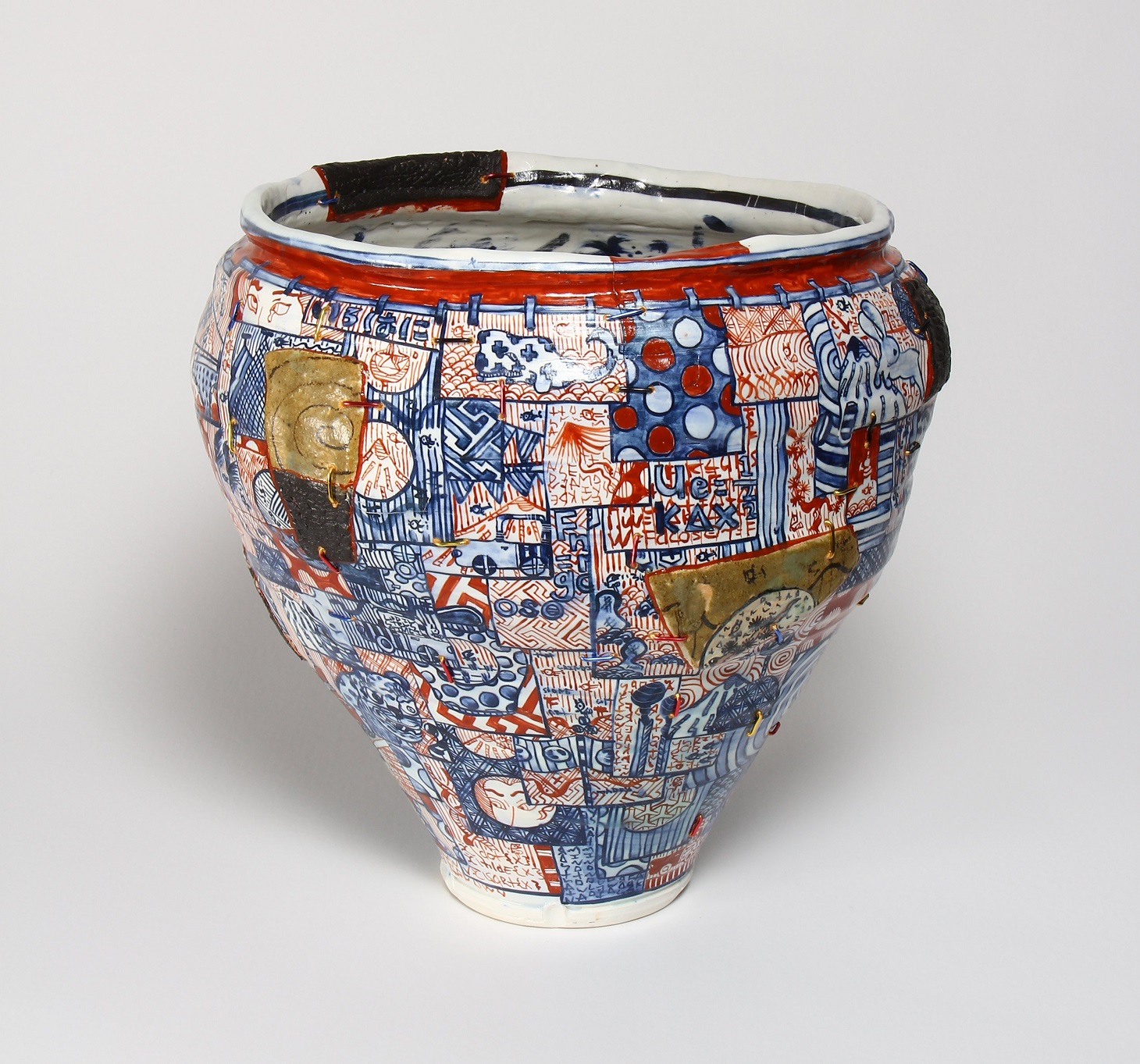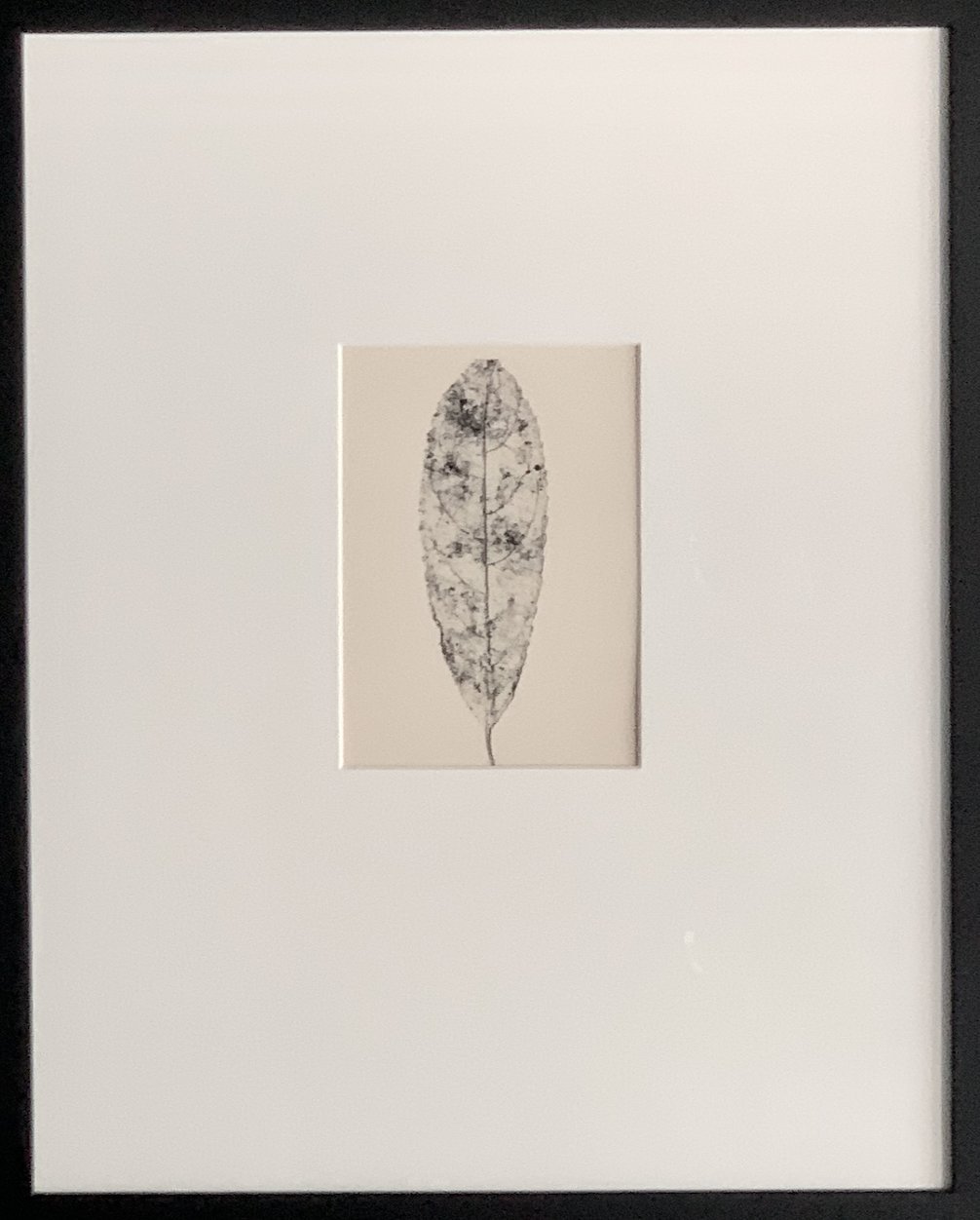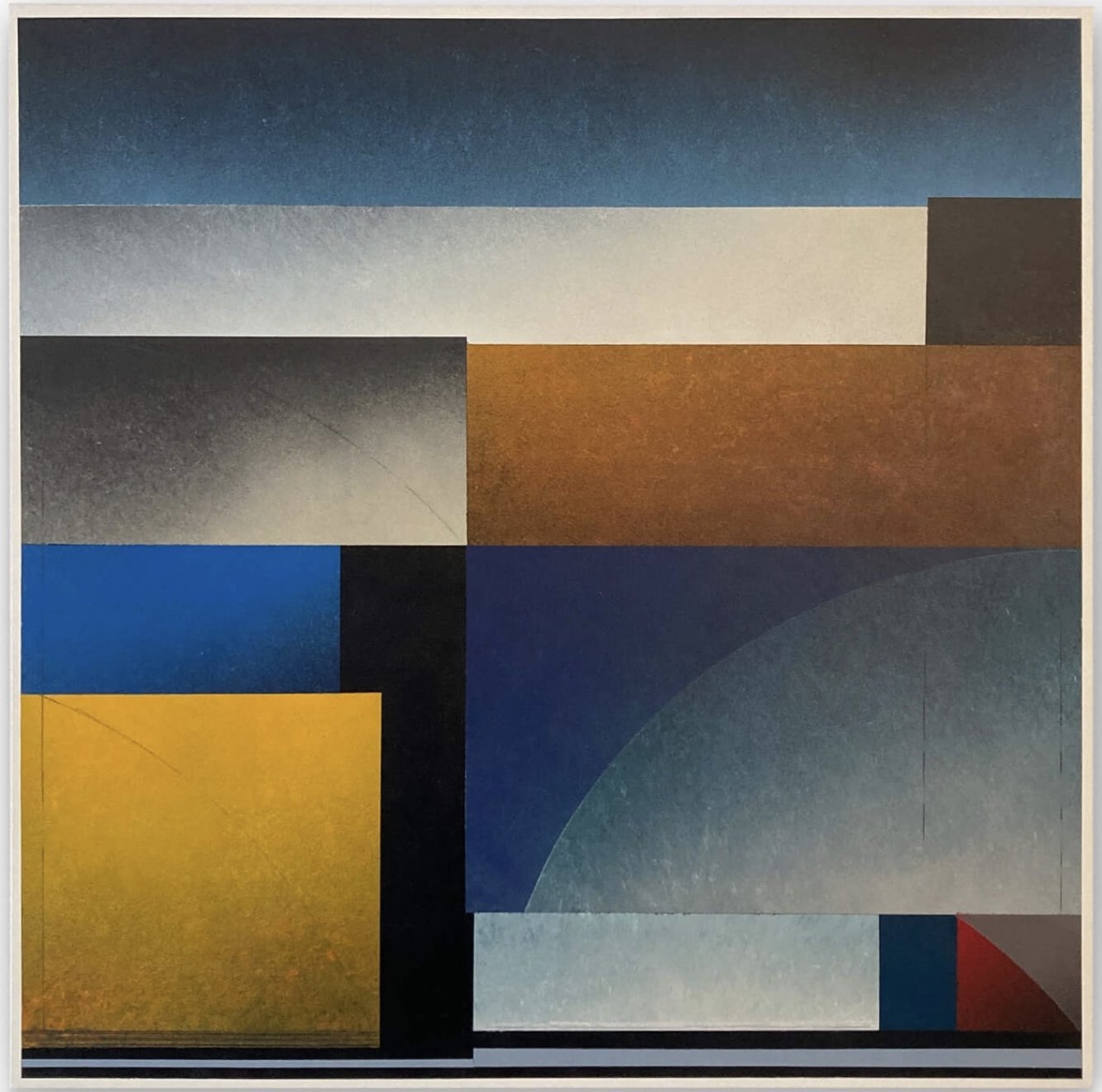
(Milford Galleries, Queenstown)
Joanna Braithwaite continues her iconic anthropomorphic animal portraits with "In Dog Years", a whimsical, witty collection inspired by the illusion in passing cars that the family dog is — literally — in the driver’s seat. Dogs of various breeds speed through the canvases in cars and campervans, in one case accompanied by an amusingly apt human. The glamourously coiffed woman in Cut and Polish travels with three poodles who appear to have visited the same hairdresser. Braithwaite’s work highlights human foibles, underscoring the artificiality of various personalities and customs, but also casting a light on serious social and environmental issues. This series leans heavily into the humour and quirkiness, but there are hints of gravity and everyday tragedy, a suggestion of passing time and implied loss.
Also at Milford Galleries is Aaron Scythe’s new solo show, "Wavering Lines", continuing his ingenious work with yobitsugi pottery, a Japanese tradition and technique of seemingly grafting together disparate sections of ceramic and materials into a new entity. Akin to kintsugi, where broken pottery is mended — often with gold — in a way that celebrates the joins and scars as something just as valid and even more beautiful than the original, Scythe’s yobitsugi work creates a ceramic tapestry of different textures, silhouettes and style. One of the standout pieces, Yobitsugi Style Large Vase, appears like the doodles and designs of a personal sketchbook, a thousand thoughts and imaginings spilling on to the surface of the vessel.

(Eade Gallery, Clyde)
In an unmissable exhibition at Clyde’s Eade Gallery, "The Alchemist and I" features a seamless collaboration between photographer Eric Schusser and his late wife, the photographer Annemarie Hope-Cross. Hope-Cross will always be renowned for her inspired work with historic photographic processes, and her floral anthotypes are exquisite — ethereal and romantic, a reflection of a creative mind and person who looked at the world amidst pain and hardship and still saw light and beauty.
In the creation of the anthotypes an emulsion is made with light-sensitive plant materials; pieces of paper are then coated with layers of the emulsion and dried. When leaves and flowers are laid over the paper and exposed to the sun for weeks at a time, the UV rays begin to bleach away the colour from the uncovered areas — and in a combination of artistry, science, patience and trust, the shape and shadow of the flowers is transferred to the paper, capturing the essence of sunlight itself. To preserve the images in perpetuity, the original is rephotographed, ensuring that the delicate beauty and magic never fades.
There’s a vintage, almost storybook quality to Hope-Cross’s anthotypes that complements the clean lines and sharp contrast of Schusser’s images; the latter reveal the same eye and instinct for the stark beauty of light and shadow that underlies Schusser’s traditional black-and-white photography. The perfect amalgamation of two artistic voices, "The Alchemist and I" is an enduring tribute to a timeless talent and love, and a sunlit, golden partnership.

(Gallery Thirty Three, Wānaka)
At Wānaka’s Gallery Thirty Three, "What on Earth" is a spotlight on the work of six very different artists, connected by their responses to the world around them and unique twists on traditional art practices. While working deep into abstraction, Richard Adams captures the essence of landscape painting, the full sensory experience of standing in nature, facing the elements. The layered blocks of colour and texture in Compass create a slightly disorientating sensation, but amidst the geometric rigidity of rectangles and squares, the eye is continually drawn back to a lunar-like curve of light, like sailors and adventurers orienting themselves by the moon and stars. Adams overlaps edges, conjuring an illusion of depth and the sense of impressions coming hard and fast, as if the eye is moving rapidly around a new view, taking mental snapshots, trying to take in everything at once.
Jane Mitchell’s "Time Stamp" series is a favourite of recent years. Mitchell photographs moments from the rain-spattered windows of car and train journeys, then creates a painting from that instant in time. There’s either a cosiness or a moody eeriness to the muted colour palette and motion-blurred scenes, depending on the mentality and angle of the viewer. The time stamps immortalise an ordinary, unremarkable second — yet we naturally assign significance to the recording of time, like a detective reviewing the scene of a crime. Mitchell cleverly applies drops of resin inside the framed glass, replicating the rain hitting the windows, slightly obscuring the view.












